The Last Supper is not only one of the most iconic moments in the Bible. More than that, it is an event filled with profound meanings and symbolism that have captured the imagination of both believers and scholars alike throughout the centuries.
This sacred banquet, shared by Jesus Christ with his disciples the night before his crucifixion, is more than just a meal. It is a turning point in the history of Christianity and a spiritual pillar that encapsulates the teachings and sacrifice of Jesus.
In the following lines, we will delve into the depths of the Last Supper to explore the historical events that unfolded that night in Jerusalem. Furthermore, we will unravel the multiple levels of meaning and symbolism that have been woven around this episode.
From the act of washing the disciples’ feet to the words spoken by Jesus as he consecrated the bread and wine, every detail offers a rich vein of theology and devotional practice.
The Last Supper is not only a pillar of the Christian faith, but it is also an event that is at the heart of Jewish tradition.
Through a pilgrimage agency to the Mount of Olives, one can begin to visualize the Jerusalem that Jesus knew. This is a vital setting for fully appreciating the depth of the events we are about to explore.
This scene took place during the celebration of the Jewish Passover, a festival commemorating the liberation of the Jewish people from slavery in Egypt. In Jesus’ time, Passover was a celebration of freedom and represented an affirmation of Jewish identity during a period of intense Roman occupation.
Jerusalem, the epicenter of this celebration, was filled with pilgrims coming from all over to offer sacrifices at the Temple and participate in the ritual banquet. This festival, rich in symbolism and tradition, provided the perfect context for Jesus to impart his final and most significant teachings to his disciples.
At this time, messianic expectation was at its peak, and many Jews were hoping for a Messiah who would free them from Roman rule. Jesus, however, presented a different message, one of spiritual salvation and personal sacrifice, which would reach its climax in the events following the Last Supper.
According to the Gospels, it was a moment filled with emotion and significance. Jesus, knowing that his hour had come, chose this meeting to institute the Eucharist. He offered the bread and wine as his body and blood in an act that prefigured his imminent sacrifice on the cross.
This act redefined the Passover bread and wine and established a new covenant between God and humanity. Jesus’ words, “Do this in remembrance of me”, resonated beyond that room, establishing a ritual that millions of Christians continue to practice today.
Additionally, during the meal, Jesus washed the feet of his disciples, an act of humility and service that emphasized the principles of leadership and community in his teaching. This gesture practically demonstrated the sacrificial love and service that would characterize Christianity.
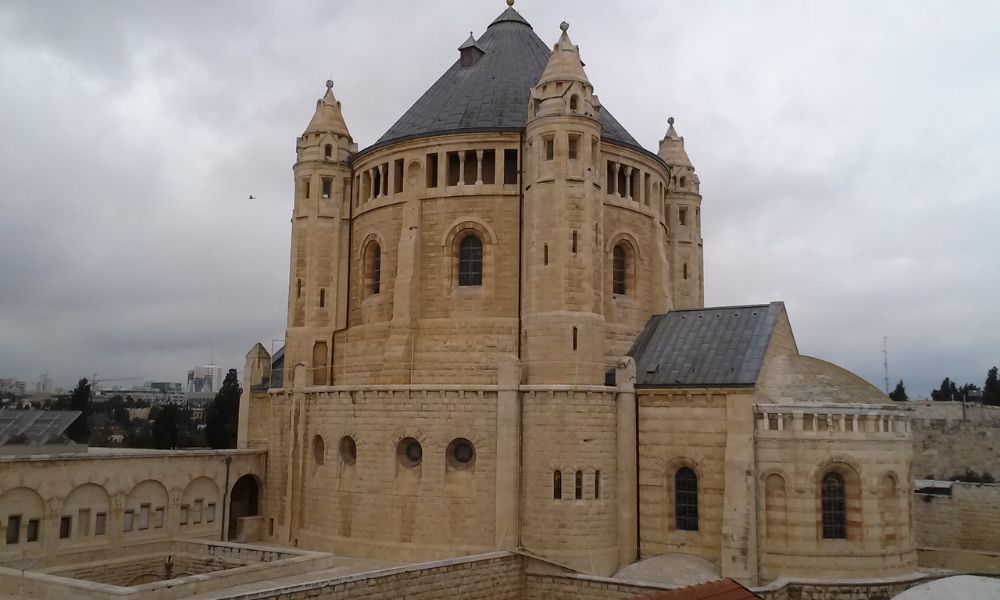
The cenacle, located in Jerusalem, is venerated as the traditional site of the Last Supper. This place is significant due to its association with this sacred act and is a site of multiple layers of religious history. It is believed that it was here that the Holy Spirit appeared to the apostles during Pentecost.
The Cenacle has been a pilgrimage destination for centuries, attracting believers from all over the world who wish to connect with the events that defined the essence of Christianity.
Throughout history, it has undergone various transformations, from its use as an early church to its conversion into a mosque during the Ottoman period. Today, it remains a testament to the amalgamation of traditions that coexist in Jerusalem.
Its historical and spiritual importance makes it a focal point for those interested in the history of Christianity.
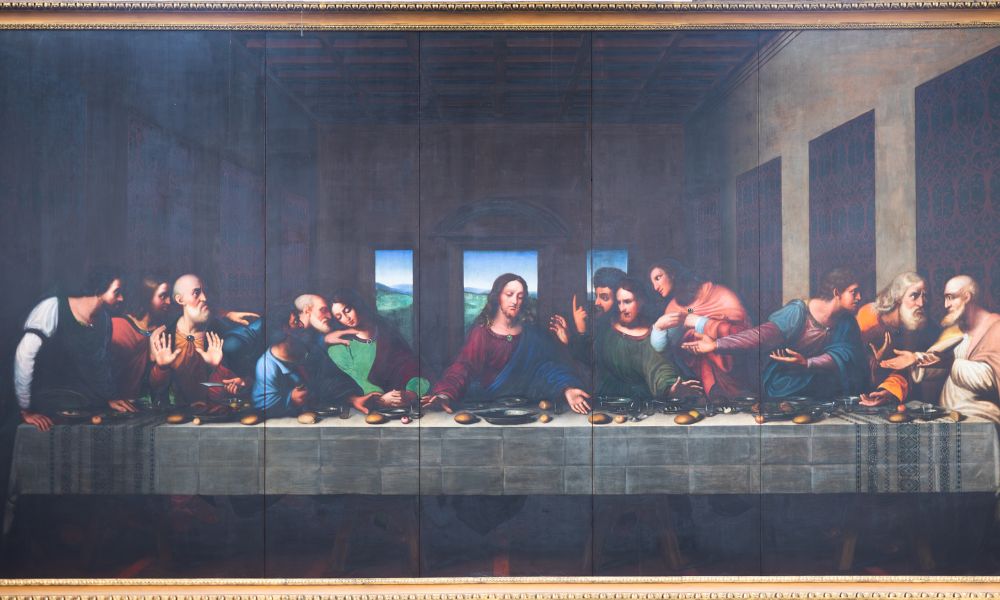
The participants played crucial roles that went beyond their physical presence at that sacred moment.
As the night unfolded towards Gethsemane, each figure revealed essential aspects of the narrative that Jesus was completing. Among these participants, the spiritual presence and symbolism of figures like Mary Magdalene add additional layers of interpretation and meaning to the event.
The synoptic Gospels of Matthew, Mark, and Luke offer a clear picture, presenting Jesus surrounded by his twelve apostles. This meal was not only a farewell before his arrest but also an opportunity to consolidate his teachings and prepare his disciples for the challenges ahead.
The apostles, chosen by Jesus during his ministry, came from diverse backgrounds. There were fishermen like Peter and Andrew, a tax collector like Matthew, and a zealot like Simon. Each brought their own perspectives and doubts to the table, which enriched the dialogue and interactions of that crucial night.
The identity of these apostles is essential for their physical closeness to Jesus, as well as for the role they would play in the foundation of the early Church. Figures like John, who reclined next to Jesus during the meal, and Peter, the vocal leader often seen as the ‘rock’ upon which the Church would be built, are of particular interest.
The dynamic between Jesus and these men illustrates the depth of their relationship, mixed with a palpable sense of mission and destiny.
This sacred moment instituted communion, a central act in the life of the Christian Church that symbolizes the new covenant between God and humanity through the sacrifice of Jesus. This act of sharing bread and wine remembers his body given and his blood shed. Additionally, it represents the spiritual union and communion between Jesus and his disciples.
In this context, communion transcends a simple commemoration. It becomes a constant reaffirmation of the presence of Jesus among his followers and a reminder of his teachings about service and sacrifice.
This crucial event emphasized the intimate relationship Jesus sought with his followers. By instituting communion, he offered them a way to remember and relive his love and sacrifice in a tangible way, ensuring that his essence and message would endure beyond his physical death.
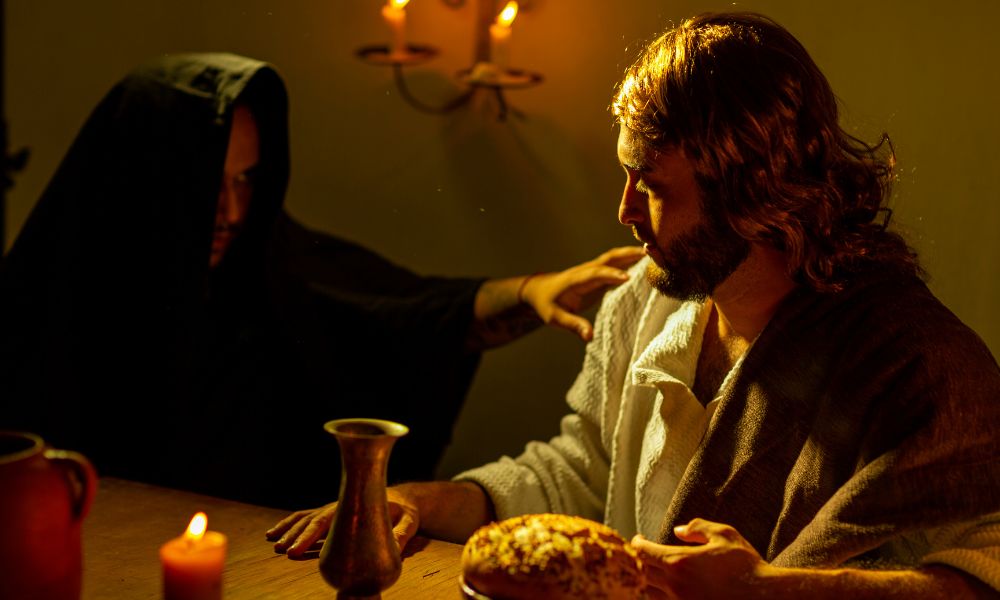
It also became the setting for one of the most infamous acts of betrayal in human history: the betrayal of Judas Iscariot. That night, Judas sealed his fate by accepting thirty pieces of silver in exchange for delivering Jesus. Moreover, he embodied the duality of human nature, where betrayal can arise even in the closest circles.
In contrast, although Peter denied Jesus three times, his story is not just one of failure. It is about redemption, showing Jesus’ willingness to forgive and restore.
These narratives of betrayal and loyalty highlight the complexity of human relationships and the power of forgiveness. They represent moments where the true nature of commitment and faith is revealed, and they serve as powerful reminders of the trials each follower may face when walking in faith.
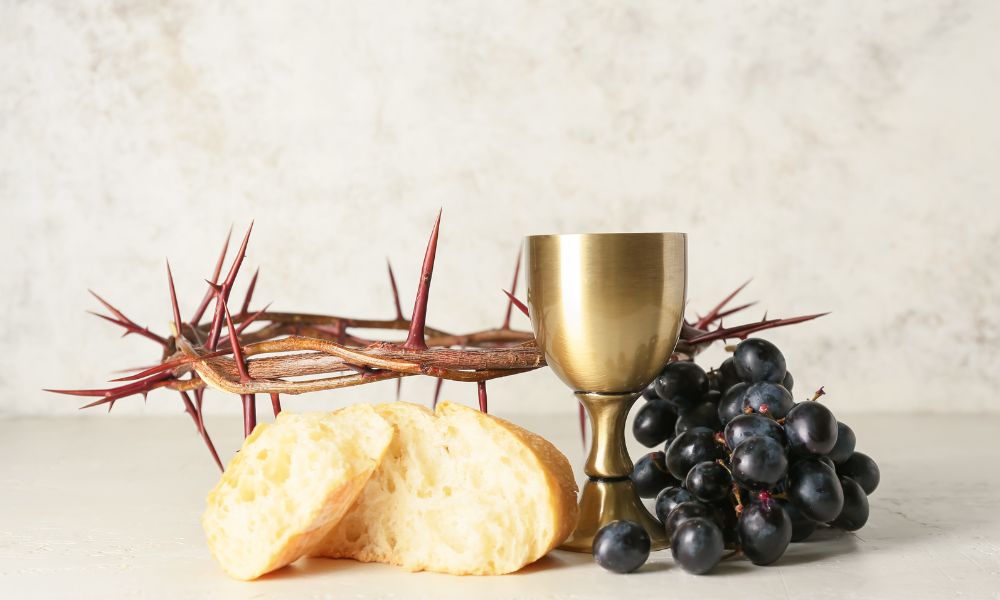
This is an event overflowing with profound theological meanings, each filled with lasting implications for the Christian faith. From the tomb of Jesus to contemporary practices in the church, the resonance of this event is felt in many aspects of Christian life.
The Eucharist, also known as Communion, was instituted by Jesus, marking a pivotal moment in Christian tradition.
By taking the bread and the wine and offering them as His body and blood, Jesus was not only preaching a message of sacrifice. He was also establishing a new form of communion with His followers. “This is my body… This is my blood… Do this in remembrance of me”, were His words, which instituted a ritual and redefined the meaning of sacrifice and redemption.
This first celebration of Communion was, therefore, both a promise and a prophecy, an act that anticipated His imminent death and the hope of resurrection.
The Eucharist became a central act in the life of the church, seen as a means of spiritual grace and a constant reminder of Christ’s love and sacrifice. More than just a commemoration, it is a sacred encounter, a moment in which believers partake in the divine life of Christ in a very intimate and personal way.
The New Covenant is fundamental to understanding the theological depth of the event. By offering the bread and the wine, Jesus Christ established these elements as representations of His own body and blood, given for the salvation of humanity. This act fulfilled ancient prophecies and inaugurated a new era in the relationship between God and man.
Through this covenant, Jesus promised a new way of spiritual interaction based not on the law, but on grace and love.
This covenant is central to Christian theology because it underscores the sacrifice of Jesus as a unique and complete act of redemption. The bread and wine thus become symbols of the presence of Christ and His promise of eternal life and ongoing communion with His followers.
Each time Christians partake of these elements, they reaffirm their adherence to the New Covenant and renew their commitment to the principles of the Gospel.
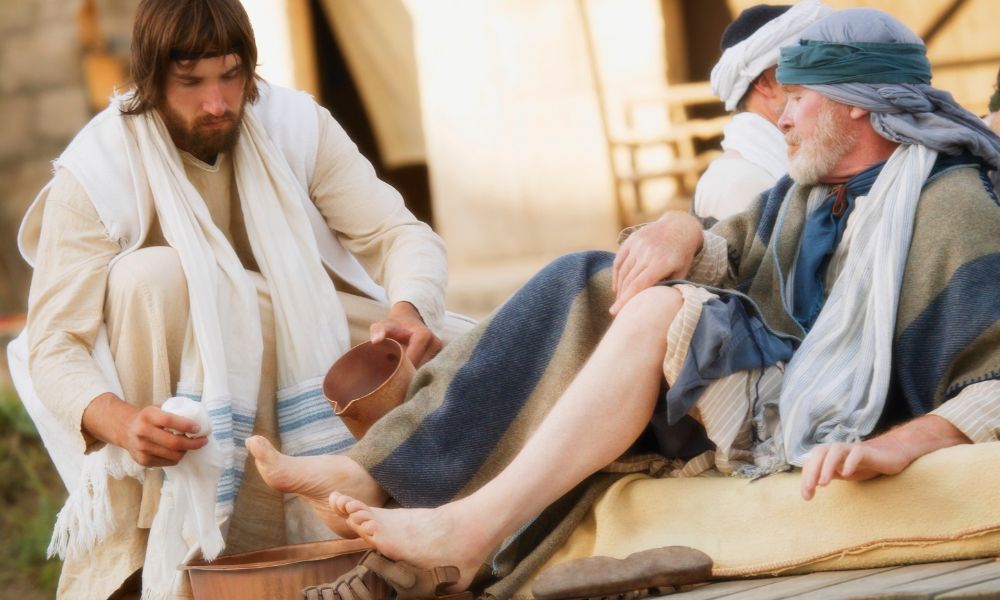
This gesture of humility and service was a surprising demonstration of leadership and love, strongly contrasting with the cultural and social norms of His time. By washing the feet of His disciples, He was cleansing their bodies and teaching a vital lesson about what it truly means to be part of His kingdom: to serve others, not dominate them.
This act symbolizes the inversion of worldly values, in the Kingdom of God, leaders are called to be servants. The washing of the feet is an invitation to all believers to adopt a life of humble service, following Jesus’ example.
Beyond its liturgical importance in certain Christian traditions, this act continues to challenge the faithful to live a life of compassion, service, and humility, essential foundations of character.
This central event in the Christian narrative instituted the teachings Jesus imparted. These enigmas and controversies enrich our understanding of the event and invite us to explore the depths of faith and religious history.
The figure of Judas Iscariot and his act of betrayal is one of the most enigmatic and debated aspects. Judas, one of the twelve apostles, is primarily known for betraying Jesus to the authorities in exchange for thirty pieces of silver.
However, his motivation and the role he played in the history of salvation have been the subject of intense theological and ethical debates. Some scholars suggest that Judas acted out of greed or disillusionment. Others propose that he may have been part of a broader divine plan, necessary for the fulfillment of messianic prophecies.
Moreover, the perception of Judas as a traitor raises profound questions about free will and predestination in Christian theology. Was Judas free to choose his path, or was he destined to fulfill that tragic role? This question remains a source of reflection for both theologians and the faithful, inviting us to consider the nature of betrayal and redemption.
The Holy Grail, often identified as the chalice used by Jesus, is a source of fascination and mystery.
Throughout history, this object has been the center of numerous myths and legends, each adding layers of meaning and speculation about its true origin and powers. According to various traditions, the Grail possesses miraculous properties, ranging from granting immortality to offering unparalleled spiritual communion.
Furthermore, the Grail symbolizes the physical presence of Christ, as well as His promise of eternal salvation and ongoing communion with His followers. The quests for the Grail, popular in medieval literature, reflect the human search for the divine and the sacred, a theme that remains relevant in many modern interpretations of the myth.
Transubstantiation, taught by the Catholic Church, holds that the bread and wine are truly transformed into the body and blood of Christ during the Mass. On the other hand, consubstantiation is a view typically associated with some Protestant denominations. It asserts that the body and blood of Christ are present in and with the bread and wine, but without changing their essence.
These discussions not only have doctrinal implications but also affect the way the faithful experience and understand the Eucharist. The debate between symbolism and reality in the Eucharistic elements invites believers to reflect on the nature of the sacraments and the real presence of Christ in the rituals of the church, reinforcing the depth and diversity of Christian theology.
This event forms a central part of Christian theology and has inspired millions of believers to undertake pilgrimages to sacred places related to that momentous night. These sites provide a tangible context for the history and serve as spaces for personal reflection and spiritual renewal.
The Cenacle, located in the Old City of Jerusalem, is venerated as the site of the Last Supper. This place is also associated with other key events such as the appearance of the Holy Spirit at Pentecost.
The Cenacle is located on the upper floor of a building that has been reconstructed and renovated over the centuries. This place reflects a mix of Christian, Muslim, and Jewish architectural influences due to Jerusalem’s complex history.
Today, it is a main destination for Christian pilgrims. Although the current structure is not the original from Jesus’ time, its spiritual significance has not diminished. Visitors here can meditate on the profound events of the Last Supper and experience a sense of continuity with biblical history.
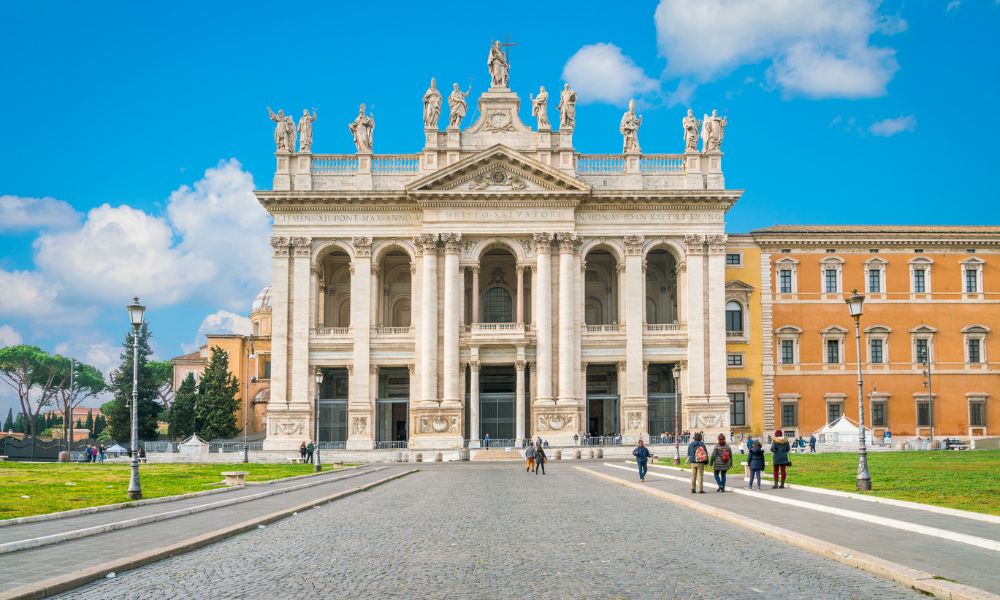
Across the world, there are numerous churches and shrines that commemorate this event and provide spaces for veneration and celebration of this event. In many of these places, special rituals are held during Holy Week, especially on Holy Thursday, which specifically remembers Jesus’ last supper with His apostles.
These places serve as pilgrimage centers and spaces for communal gathering and spiritual reflection, where believers can deepen their understanding of the mysteries of their faith. Each site, with its unique history and traditions, invites pilgrims to explore the different dimensions of the Last Supper and its lasting impact on Christian culture and spirituality.
Stay Connected with WayHoly
Discover your perfect pilgrimage and be the first to know about new journeys. By subscribing to our newsletter, you’ll receive the latest updates on pilgrimages, exclusive offers, and spiritual resources to enrich your faith journey.
Don’t miss the opportunity to deepen your connection with God and lead others on their path to spiritual renewal. Join us today and become an instrument of His Will through WayHoly!
“To upload your pilgrimage, please choose one of our plans and create an account, or log in if you’re already a member. Join us in guiding others on their spiritual journey.”